In the 20 years since the release of The Matrix, the movie has influenced a lot of other entertainment. We highlighted parts of its legacy recently. Before that, The Matrix was itself a product of many influences and inspirations, all of them filtered through the creative minds of the Wachowskis to deliver one of the most iconic films ever.
Most of the major works of cinema that informed The Matrix are well-known, but as the 1999 sci-fi classic returns to theaters this week, remastered for Dolby Vision and Atmos, and perhaps a new generation is discovering it, this is a good time to revisit the list of what fans should seek out after watching Neo’s awakening and his origin story as The One.
eXistenZ (1999)
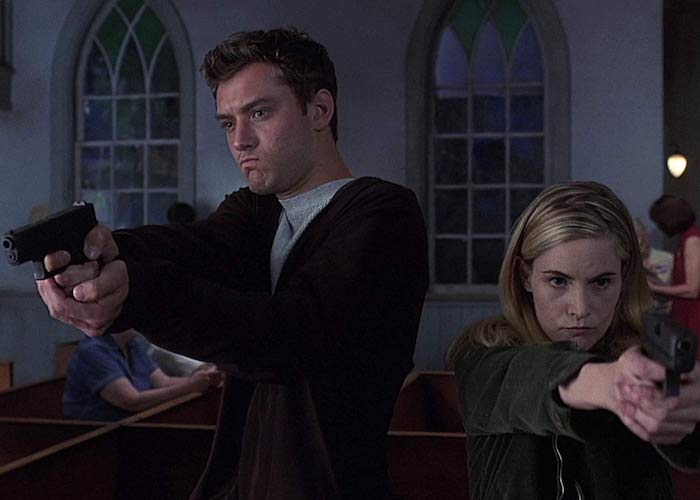
Usually, when I devote a Movies to Watch After… list to an older movie (i.e. not a new release), I keep all the recommendations to titles that came out before the one in focus. This is a special exception because David Cronenberg’s eXistenZ opened just a few weeks after The Matrix and so you could technically see this in the theater before that or vice versa. And they make a great double feature.
Compared to the revolution in visual effects that is the Wachowskis’ effort, this cult film is low-fi sci-fi. But it plays in the same sandbox as The Matrix as far as their both involving VR (accessed through ports in the gamers’ bodies) and confusion between the virtual and the real, and main characters being chased by guys who want them dead. It’s Cronenberg, so there’s a lot of fleshy practical effect as opposed to the digital wizardry of The Matrix. It’s also not as much of an action movie.
“Cronenberg’s film is as loaded with special effects as The Matrix,” wrote Roger Ebert in his review of eXistenZ, one of many at the time that had to compare the two movies, “but they’re on a different scale. Many of his best effects are gooey, indescribable organic things, and some of the most memorable scenes involve characters eating things that surgeons handle with gloves on.
Of course, there were a lot of movies in that sandbox during that time. Many fans would prefer to double The Matrix up with The Thirteenth Floor (released another few weeks later) or Dark City (out the year before) or The Truman Show (also out in 1998) or Kathryn Bigelow’s Strange Days (from 1995). (“We thought it was very strange that Australia came to have three films…that were all about the nature of reality,” the Wachowskis acknowledged: “Dark City, The Truman Show, and The Matrix.”)
The decade was big into Philip K. Dick (see also a lot of similarities with the 1990 version of Total Recall) and the new technology of virtual reality (go back to 1992’s Lawnmower Man). But eXistenZ also owes a lot to Cronenberg’s own 1983 movie Videodrome. These movies go back and then even further back. They’re all worth watching with The Matrix but eXistenZ and the Wachowskis’ movie will transport you together to a very specific time at the end and peak of the trend.
Rent eXistenZ from Amazon.
Ghost in the Shell (1995)

The most recent movie to influence The Matrix was Mamoru Oshii’s landmark anime feature Ghost in the Shell, based on the manga by Masamune Shirow. The story of an augmented member of an agency investigating cybercrime was directly cited by the Wachowskis on their movie’s website along with Akira (1988) and Ninja Scroll (1993).
The Matrix producer Joel Silver further acknowledged the influenced in a video interview stating that the Wachowskis “opened my eyes to it. [They] showed me Ghost in the Shell, and they showed me what they wanted to do with that type of action and photography and try to make it with real people, with real actors, and create a hybrid.”
Hiroaki Takeuchi, one of the producers of the Matrix animated spinoff The Animatrix, said of the hybrid (translated from Japanese): “They took angles that are used quite a bit in Japanese manga, the direction of Japanese animation, and Hong Kong wire action and successfully combined them all into a cohesive whole. To do all this in live-action is incredible!”
Here is a video showcasing many scenes from Ghost in the Shell and The Matrix side by side. The shooting of the watermelons is pretty on the nose.
Stream Ghost in the Shell free with ads on Tubi.
Fist of Legend (1994)
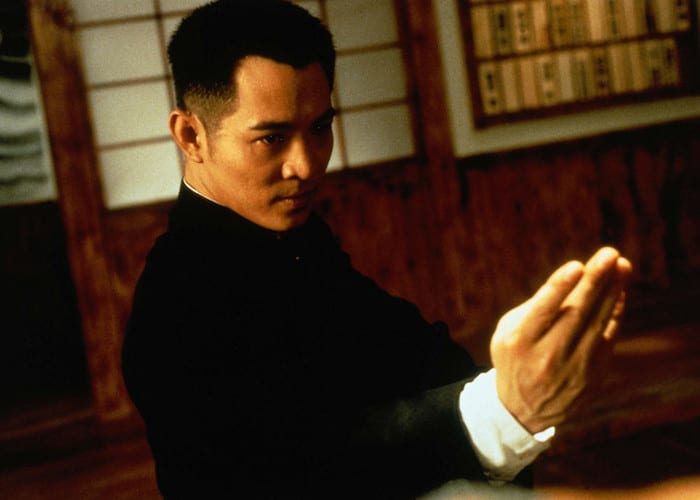
There’s a kind of meta quality to the influence of Hong Kong martial arts movies such as Fist of Legend, Tai-chi Master (1993), Iron Monkey (1993), Once Upon a Time in China (1991), Drunken Master (1978), and others. They all share a fight choreographer with The Matrix: Yuen Woo-Ping.
So, yes, certainly the Wachowskis love these movies and that’s why they imported him to Hollywood (where he and other wire-work experts found tons of gigs through the next decade-plus), but then a lot of what appears to be homages are also kind of just Yuen repeating himself.
Fist of Legend is the most recognizably copied in The Matrix, and much of the lifts are seen in the fight training sequence with Morpheus and Neo. If we look at that sequence for what it is — a program that the characters are playing within — then what are the chances the program itself could be itself a tribute to or copy of the action in Fist of Legend?
Whoever designed that program within the world of The Matrix could have themselves been a fan of the movie, in which case the stunt choreographer has significance both diegetically and non-diegetically. Whoah.
Buy Fist of Legend from Amazon.
Orlando (1992)

When both of the Wachowskis came out as transgender, The Matrix was read retrospectively as an important work of trans cinema. There’s the metaphorical level of people who are living one kind of reality that’s a lie and coming out to their true identity. There’s also a character, Switch (Belinda McClory) who was written in the script as being a different gender in each realm.
Unfortunately, Warner Bros. wouldn’t let the character be played by different actors, as it was deemed confusing. While revisiting The Matrix in the rerelease, without knowing that trivia about the screenplay, Switch still came across to me as at least of ambiguous gender, enough that I could appreciate some fluidity to their identity.
Anyway, Switch wouldn’t have had to be played by a man and a woman for the idea to work, unless the Wachowskis were looking to be too on the nose about it. Sally Potter was able to make it work in her Virginia Woolf adaptation Orlando, in which Tilda Swinton plays the long-living title character, who changes gender about two-thirds of the way through.
Rent Orlando on Amazon.
The Killer (1989)

The Wachowskis looked to two different types of Hong Kong action movie for the fights in The Matrix. We’ve already seen the martial arts type, which was brought through to their vision with Yuen Woo-Ping himself by their side. The other is the gun-heavy action of John Woo movies, including The Killer and 1992’s Hard Boiled.
Going back even further, the “Mark Gor” character played by Woo regular Chow Yun-Fat in 1986’s A Better Tomorrow is believed to be an inspiration for Neo’s look. Woo’s movies also have a balletic feel that itself is influenced by martial arts. Guns are just in the place of fists and swords. The mashup idea of “gun-fu” also originated from A Better Tomorrow.
When you look at just how much shooting occurs in the lobby sequence of The Matrix, you may think Hard Boiled, with its similarly violent hospital sequence, deserves this spot as the primary Woo example. But as seen in Robert Grisby Wilson’s Everything is a Remix video for The Matrix, The Killer gets the most explicit tribute with the standoff between characters laying on the floor.
The Killer is also just the epitome of a Woo action movie — the best and the first to introduce to newbies. The slow-motion bullet casings flying everywhere kind of operatic violent action that The Matrix also revels in. “There are many incredible and beautiful images in violence, and I think violence can be a great storytelling tool,” Lana Wachowski told American Cinematographer in 1999. “[Filmmakers] have come up with an incredible language for violence. For example, what John Woo does with his sort of hyper-violence is brilliant. He pushes violent imagery to another level. We tried to do that with The Matrix as well.”
Buy The Killer from Amazon.
Koyaanisqatsi (1982)
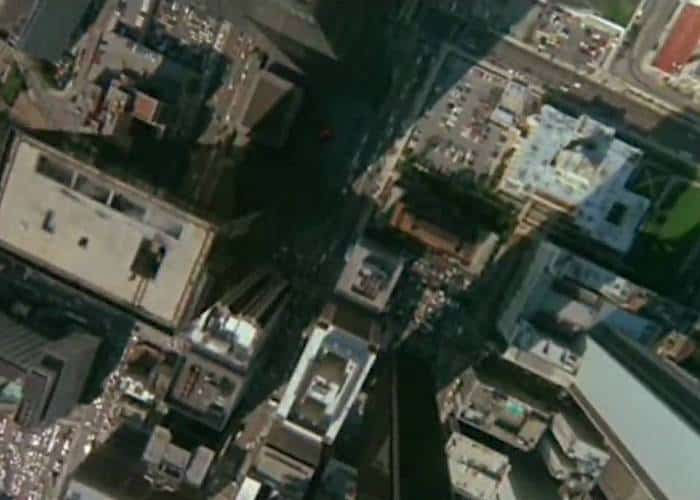
This week’s documentary pick is kind of easy since it’s always referenced as one of the movies that influenced The Matrix. Was it truly an inspiration for that one little moment on the television when Morpheus shows Neo the fake world as we see it in The Matrix? There’s an overhead shot of buildings, a shot of cars in time-lapse… sure, that’s the kind of stuff you see in Godfrey Reggio’s montage masterpiece. And I’ll accept any reason to recommend Koyaanisqatsi and its sequels, but it’s a bit of a stretch.
Still, while the material of Koyaanisqatsi was shot mostly 20 years before the year of those visuals representing 1999, Reggio’s film was also interested in man’s relationship to technology and the depiction of a modern world that was out of balance. The filmmaker says of its meaning, “It’s not the effect of, it’s that everything exists within [technology]. It’s not that we use technology, we live technology. Technology has become as ubiquitous as the air we breathe.” And then it eventually becomes sentient and enslaves us.
Stream Koyaanisqatsi free with ads on Tubi.
TRON (1982)
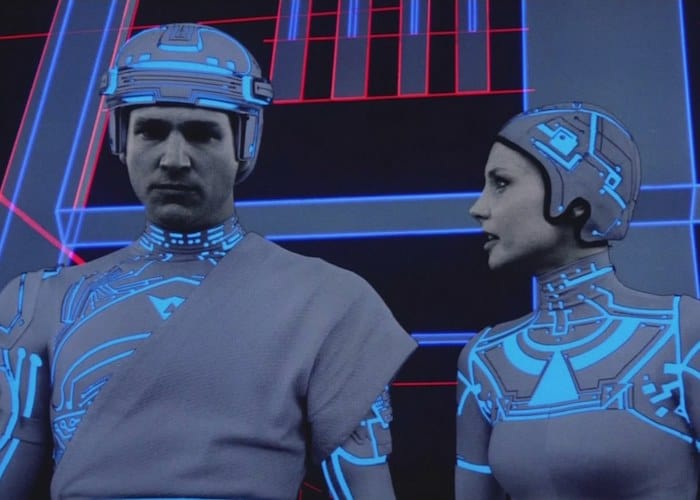
You can say anything you want about Disney, but they do try for innovation. Occasionally at the expense of a satisfying whole. Sometimes, as in the case of the new Lion King, that works out for them. Other times, as in the cases of such films as Dick Tracy and TRON, it doesn’t. This one could have been The Matrix of its time, but perhaps it was just ahead of its time.
Or maybe it looked too unique, whereas The Matrix advances on aesthetics and themes familiar enough to audiences to make it a hit and something with a strong legacy afterward. TRON, which pulls a character into a virtual reality rather than pulling him out of one, wound up a flop but a cult favorite, one that would eventually spawn a sequel, 2011’s TRON: Legacy, that itself was influenced by The Matrix.
Rent TRON on Amazon.
Superman: The Movie (1978)

One genre that’s overlooked when discussing the influences of The Matrix is the superhero movie. Yes, the Wachowskis clearly loved martial arts and Hong Kong action and anime and philosophy and Philip K. Dick stuff, but they also took from comic books and the basic myths and narratives that inspire superheroes. The idea that Neo is “The One” is your typical messianic tale that also serves as origins for many superheroes. Superman being one of them.
Of course, there weren’t a lot of good superhero movies in existence at the time of The Matrix to specifically look to for inspiration. Richard Donner’s Superman, which is still arguably the gold standard if not best ever superhero movie (I’ll swear by it to my grave), doesn’t have a ton in common with the story in The Matrix, save for phone booths being important to both protagonists and Neo flying into the sky like Superman at the end of his first movie.
Unlike Neo, Superman starts out as a god among men. There’s still a Christ allegory there but Superman never has to be convinced that he’s got gifts or that he can use them for good. One additional similarity the first Superman has with The Matrix, though, is that love definitely fuels the heroes’ last great act at the end of their respective movies. For Superman, it makes him reverse time to save Lois Lane. For Neo, it brings him back to life when Trinity professes his love and gives him a fairytale kiss.
Stream Superman: The Movie on DC Universe.
World on a Wire (1973)
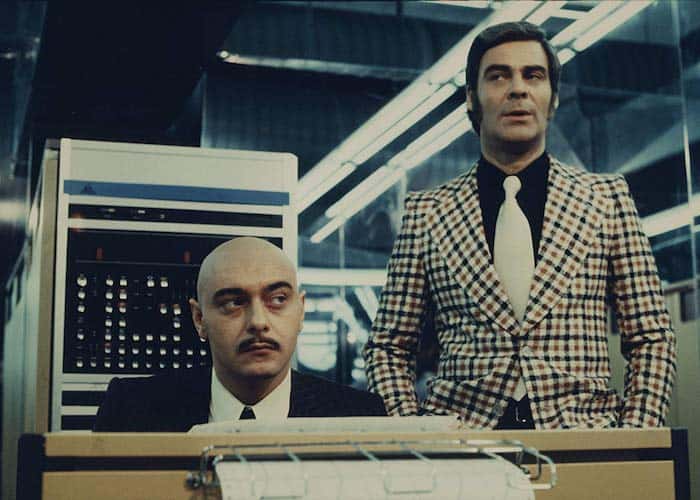
The work of Rainer Werner Fassbinder, one of the most prolific and profound filmmakers who ever lived, is sadly still unknown by a lot of Americans. Not all of his movies are accessible to basic US audiences, but like many foreign auteurs, he did make a sci-fi film that could prove to be a gateway to some viewers who need a genre to carry them over.
World on Wire, which originated as a two-part miniseries, more directly informed another 1999 movie viewed as part of the same trend: The Thirteenth Floor. That was based on the same novel, Simulacron-3, which also likely influenced The Matrix. World on Wire is so much earlier and so little seen that many fans of The Matrix will be shocked at its existence.
This is close to being future-noir before Blade Runner brought out that term, and it’s about a computer simulation program before VR was really being developed as a possibility. The paranoid conspiracy thriller plot is certainly more convoluted than the one in The Matrix, but even if it takes you multiple views to get it, the retro-futurism is such a visual delight every time.
Stream World on a Wire on The Criterion Channel.
Zotz! (1962)
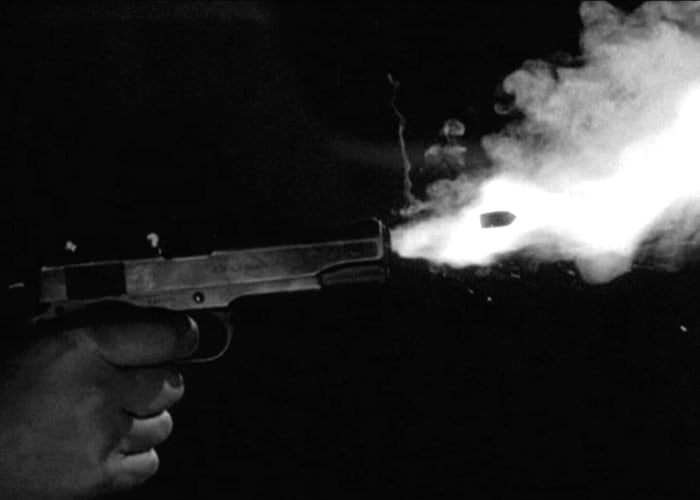
The Matrix is famous for its “Bullet Time” effect, even though the concept involved with the visual goes back to before the dawn of movies, with the proto-cinema photo experiments by Eadweard Muybridge. And even closer to the making of The Matrix, music videos and commercials were messing with the technique. But this obscure feature that came 37 years earlier is a very particular precursor.
Directed by gimmicky horror master William Castle, Zotz! is more of a superhero movie that stars Tom Poston as a man who comes into the possession of a magical amulet. In one scene that will seem to fans uncannily connected to The Matrix, he’s able to make a bullet slow down enough to dodge being shot. He can do the trick with a punch, as well.
Buy Zotz! from Amazon.
Alice in Wonderland (1951)
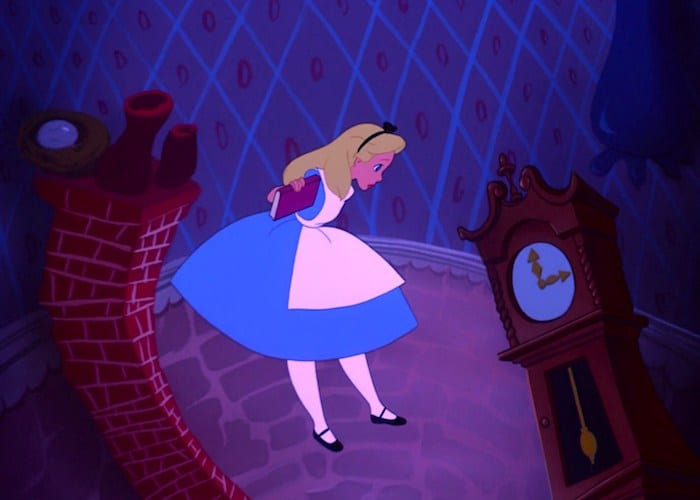
One movie directly referenced in The Matrix, besides the bit of Night of the Lepus (1972) on the TV at the Oracle’s apartment, is Alice in Wonderland. Actually, it’s the Lewis Carroll story, not necessarily Disney’s animated adaptation. But this is the version that everyone thinks of, even if Tim Burton’s live-action remake made a billion dollars and is more recent.
There are references to following the white rabbit and going down the rabbit hole and the whole movie is similarly about two different worlds, one of which is all in the imagination and/or just a dream. The Wizard of Oz (1939) also gets a shout out at one point with a line of dialogue, but Carroll’s fantasy tale is older and far more aligned with The Matrix.
Alice in Wonderland isn’t the only link The Matrix has to Disney animated classics, either. The way Trinity brings Neo back to life at the end with a kiss and profession of love, that’s the kind of happily ever after stuff we get from Disney fairytales, particularly Snow White and the Seven Dwarfs (1937) and Sleeping Beauty (1959).
Rent Alice in Wonderland from Amazon.
The post Watch ‘The Matrix,’ Then Watch These Movies appeared first on Film School Rejects.
This comment has been removed by the author.
ReplyDelete